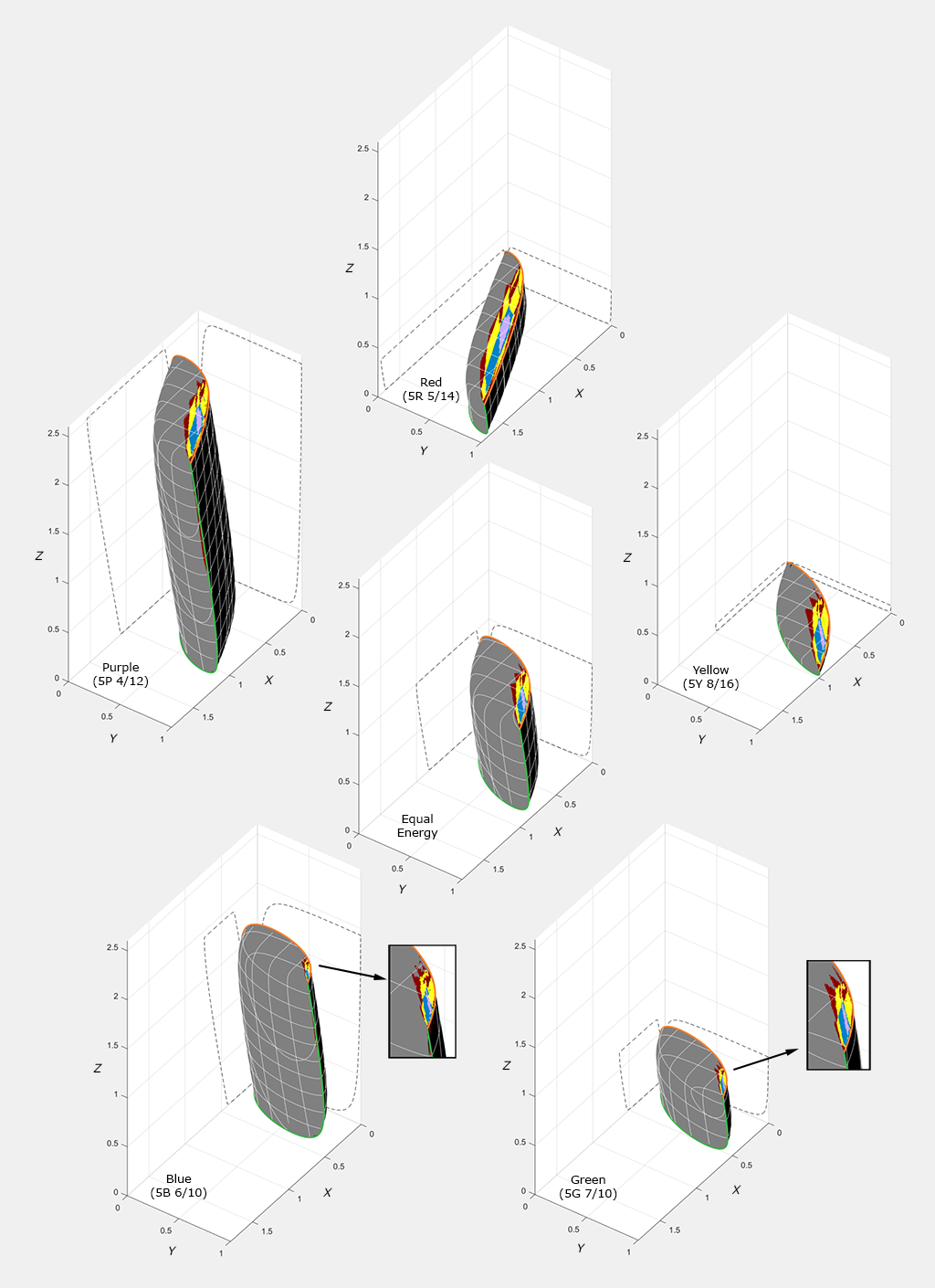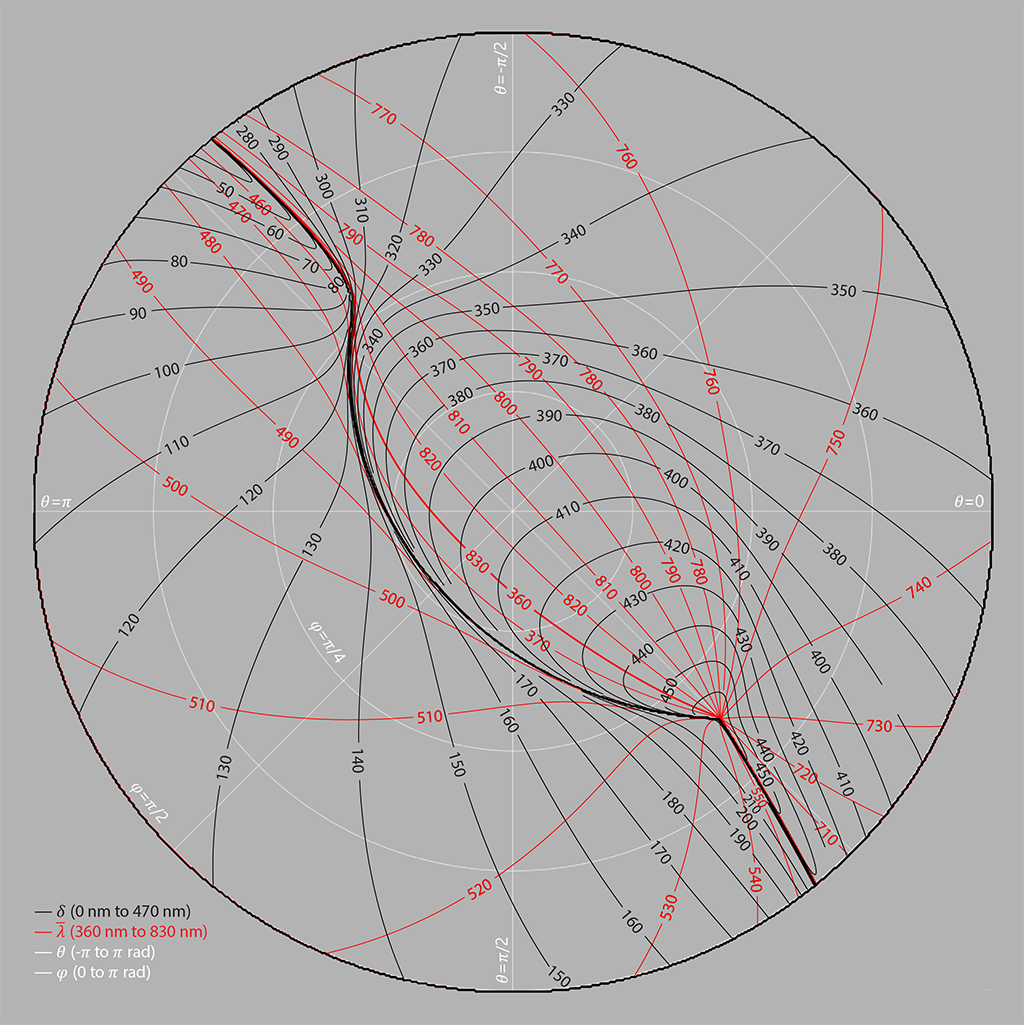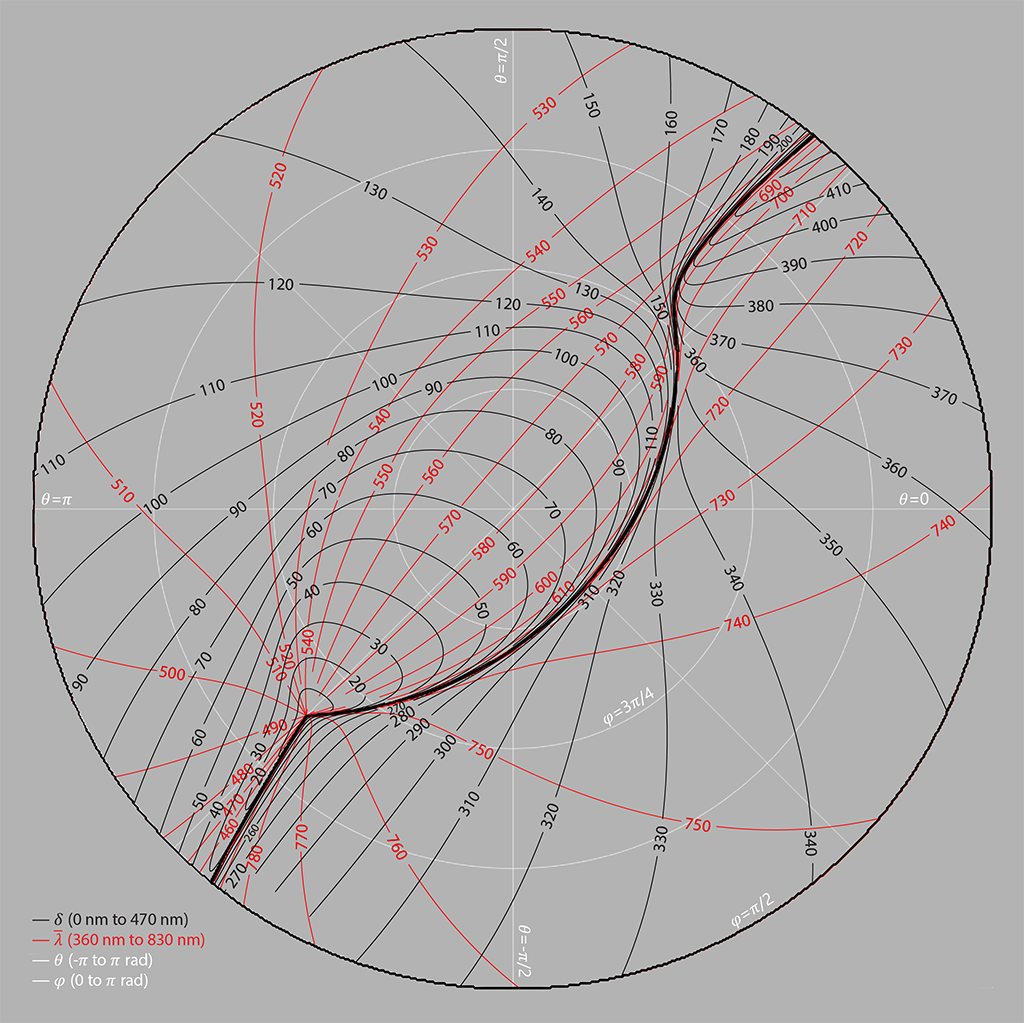Published March 11, 2021 by Scott Allen Burns; last updated May 24, 2021
3/24/2021 Scope of original paper reduced and surplus material moved here.
3/25/2021 Added plots of high transition solutions for the convexified and truncated CMFs.
3/26/2021 Added comparison of reflectance curves and completed presentation.
3/27/2021 Added an extra figure for Section 7 of the Article and plots of “Object Color Space” color descriptors.
4/30/2021 Prefixed figure numbers with “SD-” to distinguish them from the original Article figure numbers.
5/4/2021 Moved most content back to the journal paper upon request of both peer reviewers.
5/10/21 Updated status to show accepted for publication. Fixed figure numbers.
5/24/21 Added notice of publication in CR&A.
Introduction
This page contains supplementary documentation for the article “The Location of Optimal Object Colors with More Than Two Transitions,” which has been published in Color Research and Application. Any reference to “the Article” on this page refers to this publication. Please contact the author for publication requests.
Please note that the content of this supplementary documentation page should not be considered peer reviewed, as it may be updated at any time. This page was last updated on the date shown at the top of the page.
Section 7. Other Illuminants
In Section 7 of the Article, five different highly chromatic illuminants were examined, having chromaticities matching Munsell colors 5R 5/14, 5Y 8/16, 5G 7/10, 5B 6/10, and 5P 4/12. A plot of the chromaticity diagram was presented, showing the high-transition regions associated with each illuminant, plus a sixth equal energy illuminant. Figure SD-1 below presents the same high-transition data shown in Figure 9 of the Article, but plotted on the object color solid (OCS), as viewed from the outside.

Figure SD-1. The effect of five highly chromatic illuminants on the regions of high-transition optimal colors, as view from the outside of the OCS.
The dashed lines are projections of the OCS onto the XZ and YZ planes. This figure was not included in the Article because the Article was getting too long and figure laden. It is shown here for completeness.
Logvinenko’s Object Color Space Color Descriptors
Section 5 of the Article compares the high-transition, LP-generated optimal color to the two-transition Schrödinger color existing along a common ray emanating from the 50% gray point in the center of the object color solid (OCS). In order to compute the two-transition color, it was necessary to determine the ![]() and
and ![]() color descriptors, as developed by Alexander Logvinenko in his “object color space” paper.
color descriptors, as developed by Alexander Logvinenko in his “object color space” paper.![]() Each point on the surface of the OCS has corresponding, unique
Each point on the surface of the OCS has corresponding, unique ![]() and
and ![]() color descriptors, and these descriptors can be computed from the spherical coordinates
color descriptors, and these descriptors can be computed from the spherical coordinates ![]() and
and ![]() . These two color descriptors are then used by the MATLAB code developed by Masaoka and Berns to generate the two-transition color.
. These two color descriptors are then used by the MATLAB code developed by Masaoka and Berns to generate the two-transition color.![]() Figures SD-2 and SD-3 present contour plots of the two color descriptors on the polar mappings of the spherical coordinates for the top and bottom halves of the OCS.
Figures SD-2 and SD-3 present contour plots of the two color descriptors on the polar mappings of the spherical coordinates for the top and bottom halves of the OCS.

